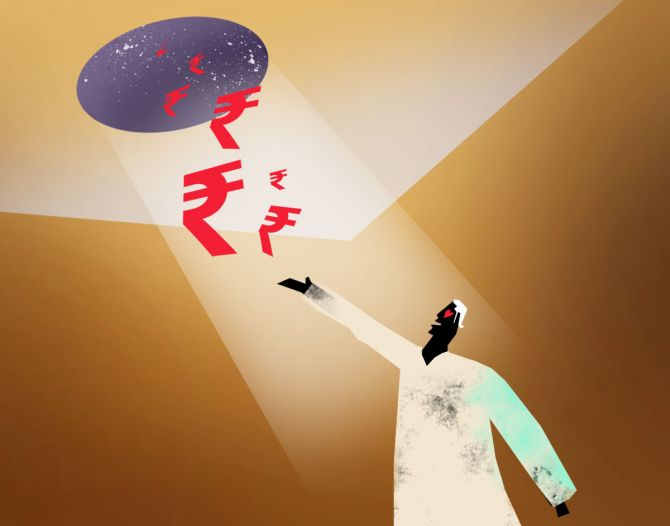'Our unsecured loan is not exactly unsecured. It is backed by cash flow of customers.'

IDFC First Bank is planning to grow the advances by 20 per cent and deposits by around 25 per cent.
V Vaidyanathan, managing director and chief executive of IDFC First Bank, tells Manojit Saha/Business Standard in a telephonic interview that the recent Reserve Bank of India norms on increased risk weighings on unsecured loans impacted the capital adequacy ratio by 100 basis points.
The bank has projected 20 per cent loan growth in the next five years while it is currently growing at 25 per cent. What is the reason?
Twenty per cent is a conservative number and we feel certain (about achievement).
If we could do better, we'll keep an eye out but we want to be disciplined about this.
More importantly, our NPA targets should be met. Even deposits are growing at 40 per cent, but we have guided for only 25 per cent growth year-on-year (Y-o-Y) for the next five years.
What was the reason for the decline in capital adequacy ratio from 18.06 per cent in October to 16.73 per cent in December?
Because of both normal growth and an increase in the risk weight, CAR declined in Q3. Even 16.7 per cent is quite strong.
The impact on capital due to the increase in risk weights was 100 bps. But we look at the core fundamentals of the business. That is strong.
Do you expect the unsecured book to slow down?
We expect this segment to slow down with higher risk weights and tighter credit.
We heed the regulator. We've also tightened the rules.
Our unsecured loan is not exactly unsecured. It is backed by cash flow of customers.
So it behaves as good as loans with security. We keep tighter credit rules than secured, so our unsecured portfolio quality is better than secured.
The cost-to-income ratio has come down over a period but is still high at 73 per cent. Do you see it coming down further?
For the next year, we are guiding loan growth of only 20 per cent. Which means, starting from a loan base of Rs 2,00,000 crore.
The bank will need only Rs 40,000 crore loan growth next year, and including CRR/SLR, maybe about Rs 10,000 crore more, and another Rs 7,000 crore for repaying bonds.
The current deposit machinery is already generating Rs 50,000 crore. Therefore, next year, much additional investments on the liabilities side may not be required, but the output will continue to come.
Therefore, our costs should stabilise from next year.
The way we look at it, the first five years (from December 2018) have gone into setting up branches, ATMs, people, technology, brand everything.
These are investments. But in the next five years, the benefits of the investment will come.
By Q4FY25, we will see a meaningful reduction in the cost-to-income ratio. And it will play out in guidance 2.0, FY24-29.
The credit deposit ratio is over 100 per cent? What is the plan to bring it down?
This is a legacy issue as we are a DFI converted to a bank. Our deposits are continuously outpacing our loan growth.
Our incremental CD ratio for FY24 is only 79 per cent, and for the third quarter was 69 per cent.
It has fallen in the last one year from 107 per cent to 101 per cent, and we expect it to bring it below 100 per cent, maybe 98 per cent by March 24.
It will keep coming down. When the merger with Capital First happened, it was 137 per cent.
The net interest margin for Q3 was at 6.42 per cent. Will you be able to hold on to such levels?
Our margins were strong because last quarter we brought down the savings account interest rate to 3 per cent for deposits up to Rs 1 lakh.
We were paying 4 per cent earlier. The bank had a healthy current and savings account deposit of 46.8 per cent in December.
Can you maintain such levels?
We will maintain the Casa ratio. Our guidance is that by FY29, we have projected a 48 per cent Casa ratio. In the next two years we will pay off most of the legacy borrowing and bonds.
Today, the bank is raising deposits not only for its growth but also for paying the legacy bonds. After two years, we will raise money only for growth.
This will reduce our requirements for funds. So, this will also give us the opportunity to further reduce the interest rate on savings account deposits.
The cost income ratio will also improve because of this. We have gone at this step by step. We have sorted the liability part, sorted the asset part.
Feature Presentation: Aslam Hunani/Rediff.com











